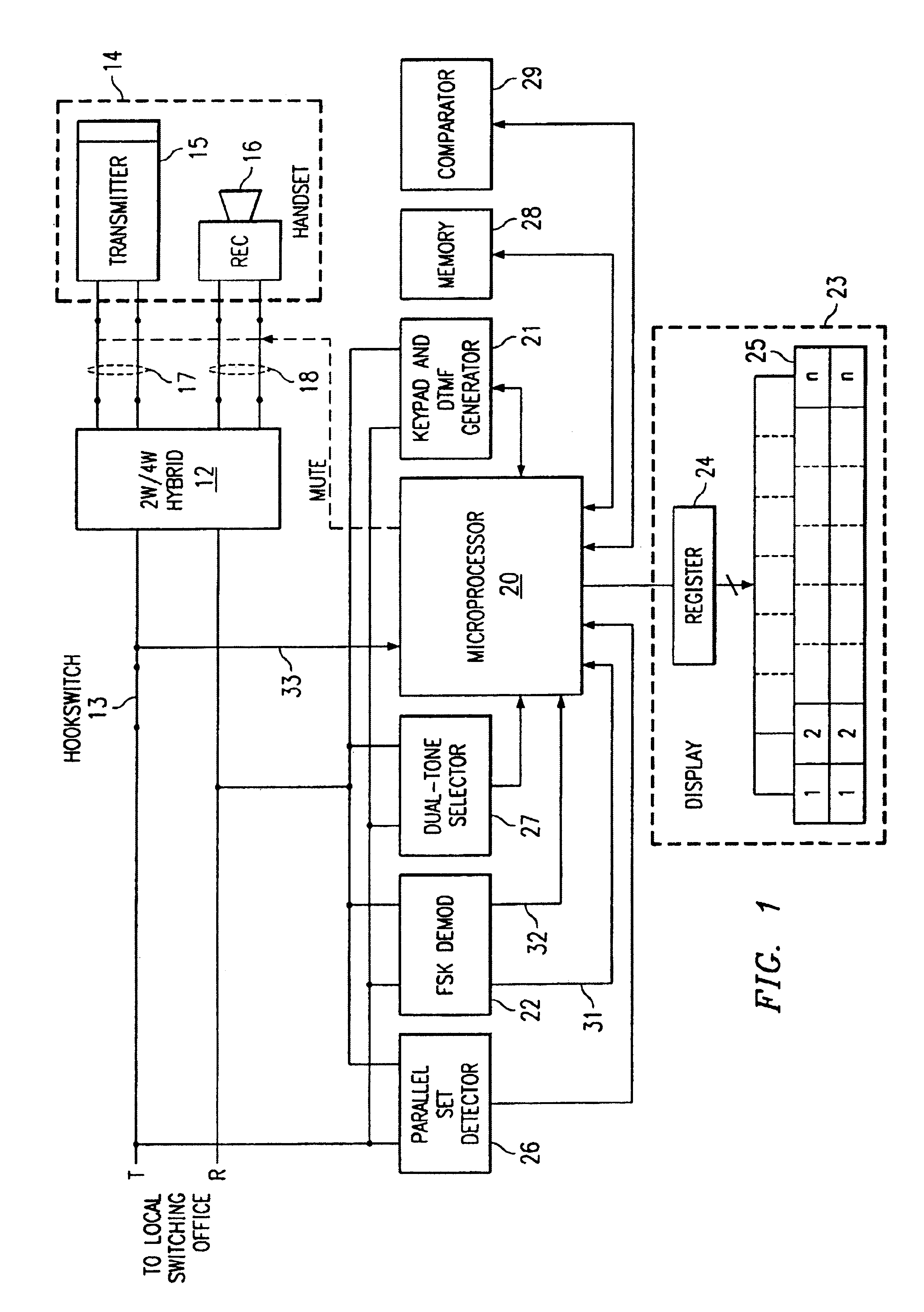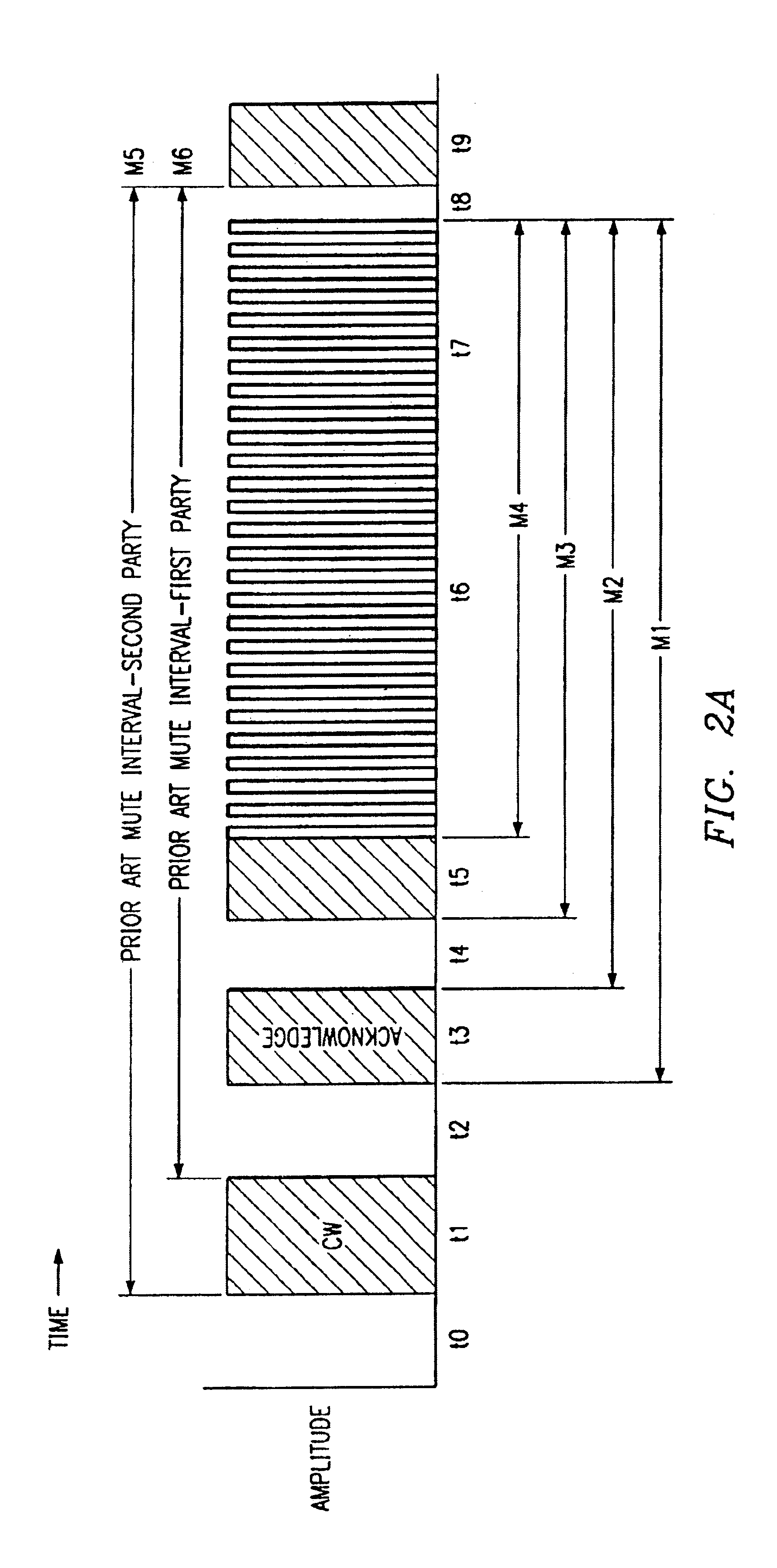Enhanced call-waiting with caller identification method and apparatus using notch filters
a caller identification and caller technology, applied in the field of improved caller identification services and apparatus, can solve the problems of inconvenient and efficient implementation, inconvenient second-party implementation, and mute condition to occur, and achieve the effect of reducing the amount of tim
- Summary
- Abstract
- Description
- Claims
- Application Information
AI Technical Summary
Benefits of technology
Problems solved by technology
Method used
Image
Examples
Embodiment Construction
[0038]FIG. 1 is a block diagram of at least a portion of an apparatus (CPE) necessary to implement the invention. It is recognized that the CPE adapted to implement the inventions herein could comprise a conventional telephone set with integral circuitry, an adjunct call waiting with caller identification display device, a personal computer with a modem, or other devices. It is further recognized that some elements shown in the block diagram are not required for some embodiments of the invention whereas those elements would be included in other embodiments of the invention described in this specification.
[0039]Incorporated herein by reference is the signaling method, format and definition of the messages and parameters as may be utilized in the invention, entitled Calling Identity Delivery On Call-Waiting, TR-NWT- 000575. Further reference may be made to Caller Identification With Call Waiting: Request For Information From Customer Premises Equipment Suppliers, RFI 91-03; SPCS Custo...
PUM
 Login to View More
Login to View More Abstract
Description
Claims
Application Information
 Login to View More
Login to View More - R&D
- Intellectual Property
- Life Sciences
- Materials
- Tech Scout
- Unparalleled Data Quality
- Higher Quality Content
- 60% Fewer Hallucinations
Browse by: Latest US Patents, China's latest patents, Technical Efficacy Thesaurus, Application Domain, Technology Topic, Popular Technical Reports.
© 2025 PatSnap. All rights reserved.Legal|Privacy policy|Modern Slavery Act Transparency Statement|Sitemap|About US| Contact US: help@patsnap.com



